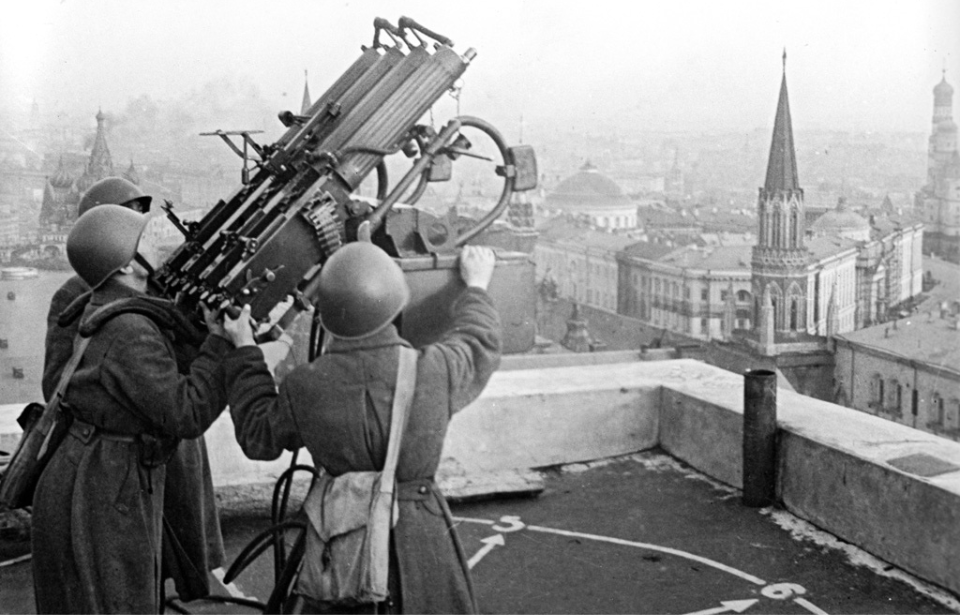When we delve into the defining moments of the Second World War, the Battle of Moscow stands out as a turning point that showcased the resilience and strategic prowess of the Soviet Union. Occurring from September 1941 to January 1942, the engagement not only halted the advance of one of the most formidable military forces in history, but also marked the start of a series of events that eventually led to the downfall of the Axis powers.
The importance of Moscow as a target for the Axis cannot be overstated. As the political and economic heart of the USSR, taking control of the city was deemed crucial for crippling Soviet resistance. However, its defenders, under the command of Gen. Georgy Zhukov, employed a combination of fortified defenses and counterattacks, which, when paired with the harsh Russian weather, created a formidable barrier that proved daunting to break through.
Operation Barbarossa
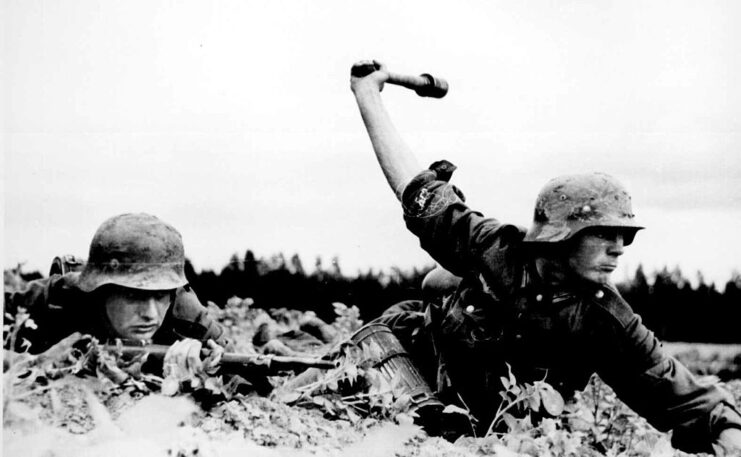
Operation Barbarossa, the German invasion of the Soviet Union, was one of history’s largest military undertakings and it set the stage for numerous confrontations, including the Battle of Moscow. The plan was to secure a swift victory, with the Axis powers underestimating the resilience and the vast resources of the Soviet Union.
On June 22, 1941, after a two-month delay, the advance was launched, with approximately three million Germans, encompassing 150 divisions, and a combination of Finnish and Romanian troops moving toward their objective via the north, south and center. Among their ranks were 3,000 tanks, 2,500 aircraft and 7,000 artillery pieces.
As was expected, the Soviets were ill-prepared, and while demobilized, fought with a resilience the Germans hadn’t expected. By the time December rolled around, the advance had significantly weakened, no thanks to the worsening weather. The operation’s failure to achieve its objectives before the onset of winter marked a crucial turning point in the Second World War.
Advancing toward Moscow
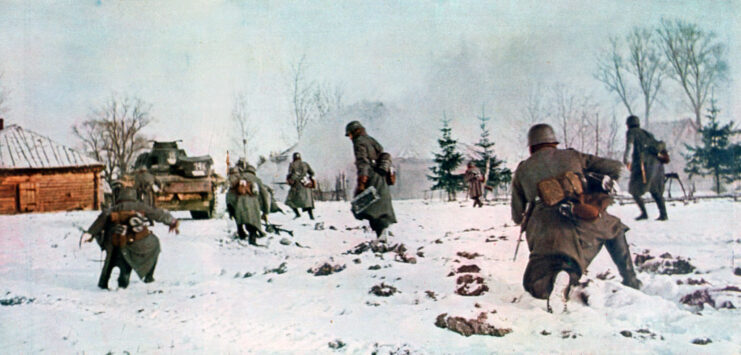
As the Germans initiated their offensive operations, the advance toward Moscow marked a critical phase along the Eastern Front. Capturing the Soviet capital wasn’t just a military objective, it would be a psychological blow against the USSR. The approach was meticulously planned, with multiple groups pushing through the vast landscape while overcoming natural obstacles and sporadic resistance.
Dubbed “Operation Typhoon,” it featured two pincer offensives. The first was aimed against the Kalinin Front and would come from the north, while the second to the south would see an attack along the Western Front. What wasn’t taken into account was that the Red Army had bolstered its numbers, meaning around a million soldiers were ready for what the Germans had to throw at them.
The German command believed taking Moscow would cripple Red Army leadership and control, and potentially lead to a quicker conclusion to the fighting on the Eastern Front. They were initially successful, capturing hundreds of thousands of Soviet troops near Bryansk and Vyazma, but Mother Nature had other ideas as they neared the capital.
Soviet defensive strategies
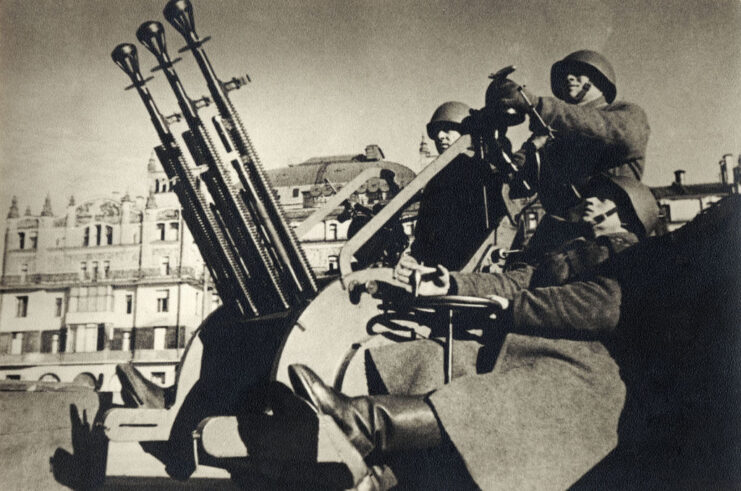
As the Battle of Moscow loomed, Soviet leaders understood the critical nature of their defensive strategies. Preparations began in earnest, with a focus on fortifying the city and its surroundings. They built up their defensive lines, including trenches, anti-tank ditches and fortifications designed to slow down or halt the advance of the German forces.
In response to the advance, the Soviets also implemented strategic countermeasures to disrupt the enemy. One notable tactic was the use of scorched earth policies, where they destroyed infrastructure and resources that could potentially aid the German forces. Furthermore, the Red Army conducted a series of counteroffensives, taking advantage of the harsh winter.
Weather and the Battle of Moscow
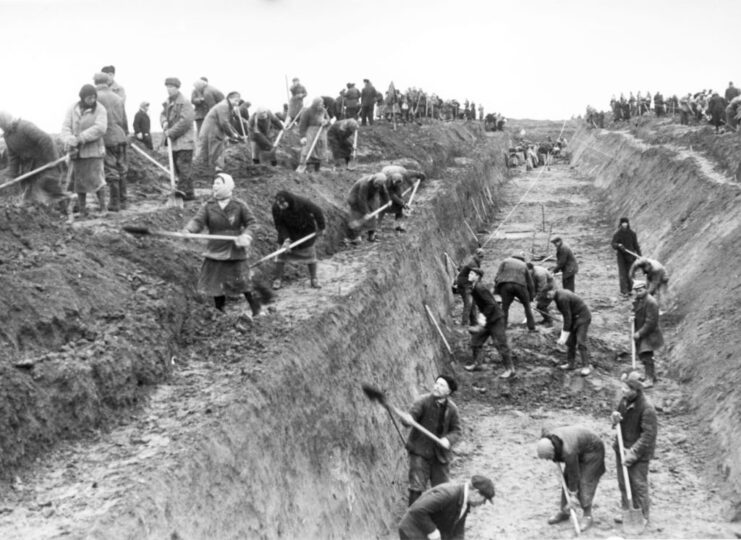
One cannot overlook the significant role the harsh Russian winter played in shaping the outcome of the Battle of Moscow. Before temperatures plummeted to extreme lows (it was the coldest European winter of the 20th century), heavy rain made the terrain impassable, with vehicles getting stuck in the mud.
As the cold weather set in, equipment and machinery began to fail. Lubricants froze, rendering vehicles and firearms inoperative, while upwards of 130,000 soldiers suffered frostbite, due to inadequate winter clothing. Logistical issues prevented warm clothes from arriving. On top of this, while the muddy conditions had made movement difficult, the deep snow made the situation equally as challenging. Trudging through it was just as bad as the mud, if not worse.
The Red Army was more acclimatized to the winter conditions. The snow-covered terrain and freezing temperatures became a formidable ally that, along with man-made defensive measures and human resilience, slowed down the German advance and eventually contributed to the enemy’s failure to capture Moscow.
Aftermath of the Battle of Moscow
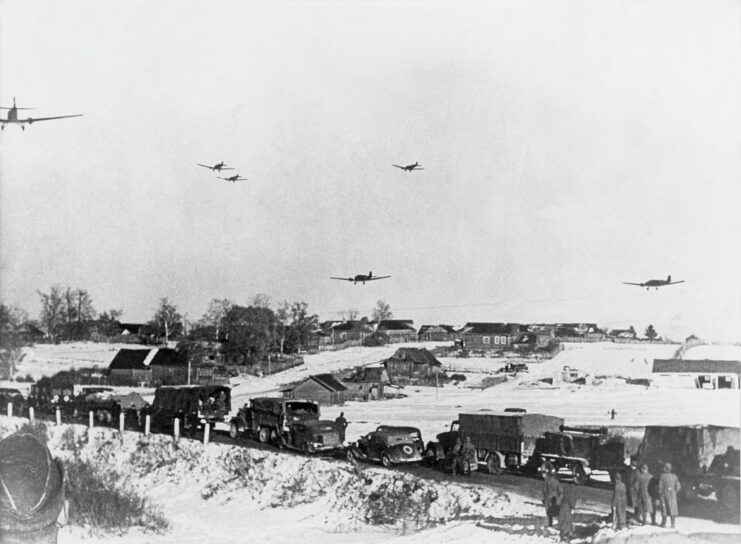
The aftermath of the Battle of Moscow had profound implications, not just for the Soviet Union, but for the entire course of World War II. Following the successful defense of their capital, Soviet morale soared. The victory also galvanized the wider Allied forces, offering a glimmer of hope that the Axis powers could, indeed, be defeated.
Speaking after the war, German Field Marshal Albert Kesselring said of the loss:
“The capture of Moscow would have been decisive in that the whole of European Russia would have been cut off from its Asiatic potential and the seizure of the vital economic centers of Leningrad, the Donets Basin, and the Maykop oil fields in 1942 would have been no insoluble task.”
More from us: Paddy Mayne Executed Some of the Most Daring Raids Against Enemy Strongholds During World War II
As the city wasn’t captured, Germany wasn’t able to prevent the Soviet Union from aiding the Allies in their fight against the Axis, and the battle consequently became one of the first instances where it became clear that the Führer wasn’t going to win the war.
